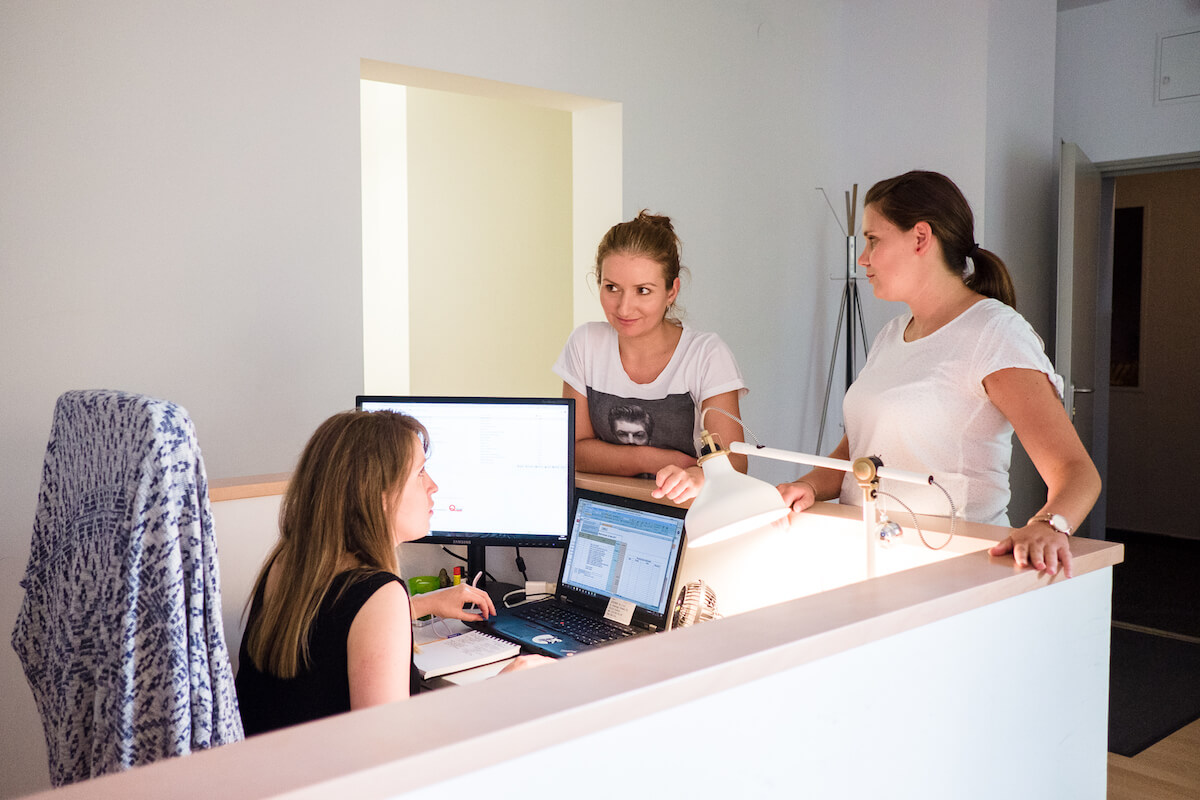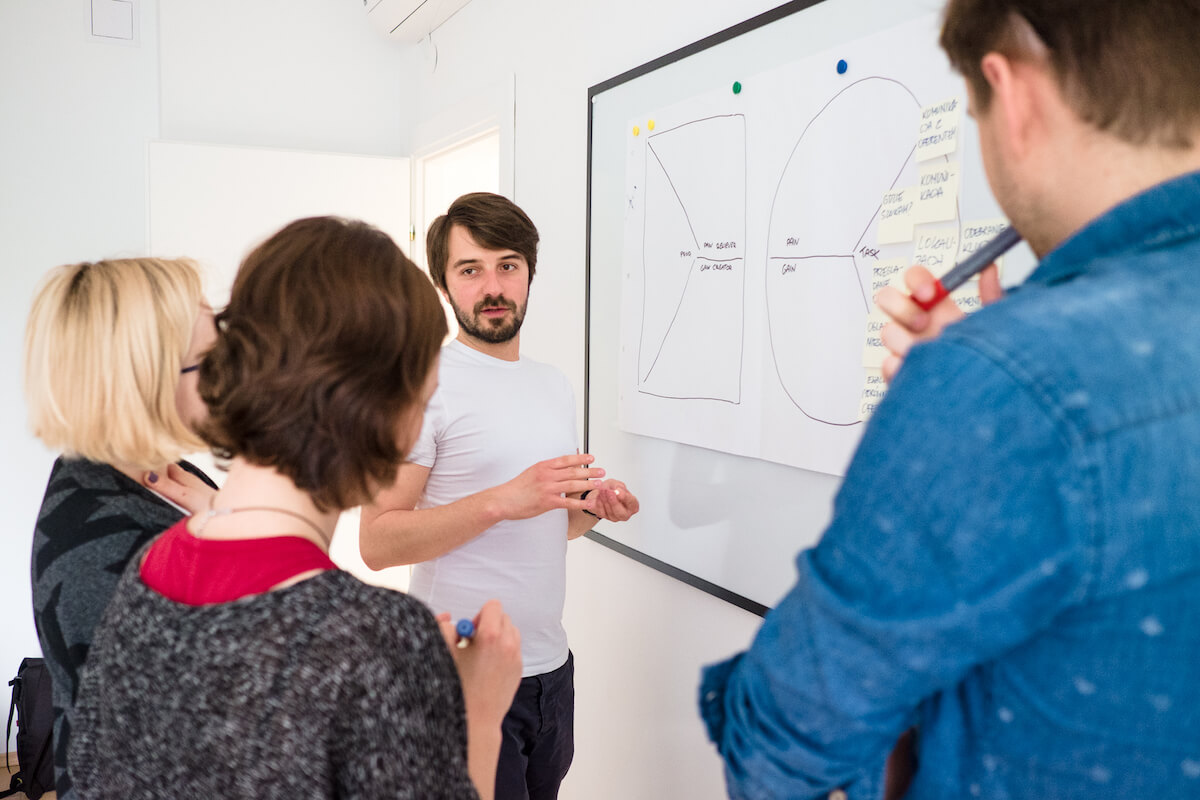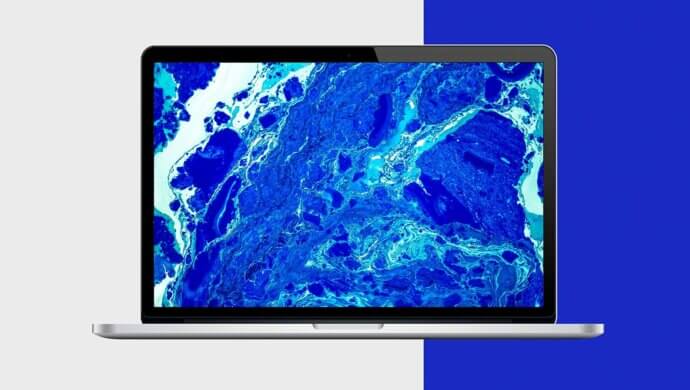I know companies that use several or even dozens of tools, websites, and systems for their daily work. This approach unfortunately has nothing to do with a positive Digital Employee Experience. How do you select only the most necessary technologies?
Explore two worlds
At an industry conference, I attended a lecture by a former Cisco marketing director. In his presentation, he talked about, among other things, a problem that new employees at this organisation were confronted with.
On their first day with the company, they were shocked by their work tools. Instead of a smartphone, they were given a Blackberry phone with a push-button keyboard. Mailboxes had a 500 MB limit and an attachment sent could weigh a maximum of 5 MB. In addition, all technical issues had to be dealt with by the IT department. Sounds familiar?
More often than not, we live in at least two realms. The private one is chock-full of gadgets, social media, and technology that works the way we want it to, and the workplace one is usually less diverse.
Research in the US shows that only 3 in 10 employees are satisfied with the tools they use on a daily basis. What’s more, the vast majority say that employers do not provide them with solutions that are modern and intuitive and help them fulfil their daily responsibilities.
Don’t run away from digital
In January, Maja Biernacka described on her blog the trends that she believes will reign supreme in 2019. At the top of the list was the concept of digitalisation, which in the context of HR departments is most often understood as the implementation of a Digital Workplace. Why are these processes important?

I am of the same opinion as the author – there is no escaping the electronic working environment. Indeed, more and more organisations are recognising the need to digitise processes related to time-keeping, accounting for business trips, employee training, or leave issues. In most organisations I have spoken to recently, these processes are carried out in an analogue way – using a printed form, which is then manually entered into an ‘immortal’ spreadsheet. This approach is as effective as it is cumbersome for employees.
Nurture the Digital Employee Experience
In recent years, companies have put more and more effort into nurturing the employee and candidate experience. These efforts can be seen at many stages, from recruitment to onboarding to daily presence in the office. Unfortunately, the right choice of tools is increasingly forgotten in the process. As a result, the idyllic vision of work outlined by the recruiter usually disappears after the first contact with outdated software.
In the context of the employee experience, it is also worth taking care of its digital dimension, the Digital Employee Experience (DEX for short). This is the sum of all digital interactions between employees and the organisation. We most often talk about Digital Employee Experience in two dimensions – process and tools.
The process dimension is related to the employee’s presence in the company structures. Digital tools should support his or her career development and all processes related to recruitment, onboarding, development, and offboarding. Properly designed procedures can reduce the employee’s stress levels and emotions related to the transitional moment of starting a new job. Additionally, they accelerate his or her achieving full productivity.
The second dimension of Digital Employee Experience is related to digital tools for example, communication, knowledge sharing, or handling of HR processes.
The appropriate adaptation of systems to the needs of employees is by far the most important and visible manifestation of care for the digital employee experience. From an organisational perspective, it is important in this area that the tools are available regardless of the device and location of the employee (sometimes, for example, there may be a need to connect to the company intranet from home or while on business trips). Another important factor is the data that can be collected using digital tools, which can help the organisation to optimise certain processes.
From the perspective of the end users, i.e. the employees, it is important that the aforementioned tools are easy to use, intuitive, and supportive of daily work. Above all, it is, therefore, worth ensuring that they are tailored to the real needs of each stakeholder. How can this be done?
Find out what your employees need
The simplest and most natural method is a simple conversation – an interview with the employee. It is then a good idea to raise issues related to their daily work, their problems, and the tools they use on a daily basis. Open-ended questions, which provoke free expression, work best in interviews. It is also a good idea to ensure that the interview takes place in a place that is quiet and comfortable for the interviewees.
A clever way to make the interview more interesting is the so-called free exploration. During an interview with an employee, we go through the tools he or she uses on a daily basis together and let him or her talk about the different functions and what is happening on the screen. In this way, we can gain more in-depth information.

Taking care to structure such an interview is also worth it. A script containing the most important questions, prepared before the first interviews, will help. The questions contained therein should be consulted with the team and verified as to whether they definitely cover the topic. The final important issue is the selection of interviewees. Ideally, the group of interviewees should include representatives from all departments of the company so that the conclusions of the survey are as complete as possible.
Research, observe, explore
At the beginning of the 20th century, in order to conduct ethnographic research, one had to travel to a distant, preferably exotic country and observe the lives of the natives on the spot. Today, it is enough to enter an office building and see how the people working there behave on a daily basis. Observations of this kind bring a lot of interesting conclusions. In many cases, they allow us to better understand the daily habits of employees and catch information that is difficult to describe in words.
During such an examination, it is worth noting what is on the employee’s desk. For example, what items or accessories he or she uses on a daily basis. Notations on various types of coloured cards, which are usually attached to a corkboard or monitor, are invaluable in this case.
Another interesting source of information is the observation of the way of working. Very often, while performing a task, we consult colleagues from neighbouring desks. We usually ask them if they know where to find a particular document or how to handle a particular issue. The result can be a list of the most common problems faced by employees.
Invite to the discussion
Some issues are worth discussing in a larger group, in the form of a workshop. During the discussion, different points of view can be confronted and ideas to solve pressing problems can be developed.

As with the interview, it is a good idea to prepare a list of topics to be covered before the first workshop. Workshop methods such as brainstorming or persona development (a description of a fictional but possible character created for the design process) are also great for group work. Each persona represents a specific audience because they have similar demographic characteristics, expectations, and experiences to the employees.
When organising a workshop, it is a good idea to invite people with similar knowledge and understanding of the organisation – for example, employees from one department, managers, etc. However, do not exaggerate the size of the group – the optimum number is between 4 and 6 participants.
Use the results
Just knowing what employees need is not enough. It is worth confronting the information gained with the organisation’s business objectives, e.g. by organising a workshop with decision-makers in communications, HR, and the implementation of digital solutions for employees.
During the meeting, the results of the research can be discussed, staff personas can be presented and areas that need more attention can be identified. The outcome of such a workshop should be a jointly developed list of tools and specific functionalities to be rolled out across the organisation. Using design methods and involving employees and decision-makers in the process will develop a set of tools that will be effective, liked, and really needed by the organisation.
Are you interested in the topic of research with employees? Read our free guide “How to research employee needs”.




